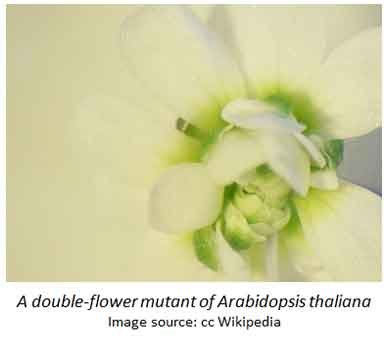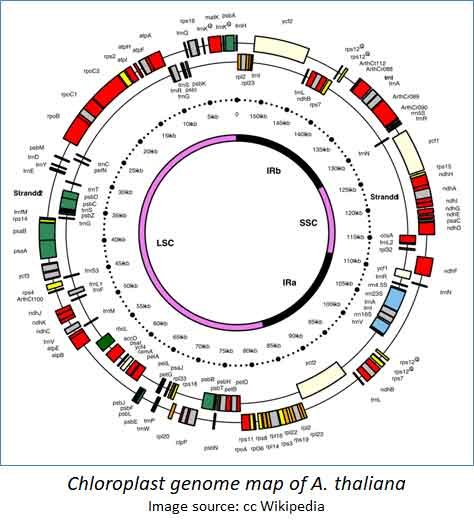Arabidopsis thaliana as a Model Organism: Have you ever wondered how scientists study plants to understand their growth, development, and responses to the environment? One of the key players in plant research is a little weed called Arabidopsis thaliana. Despite its unassuming appearance, this tiny plant has become a giant in the world of botanical research. Let’s explore why Arabidopsis is such a valuable model organism in botanical research and how it has contributed to our understanding of plant biology. You can download the PDF of this article from the download link provided below the post.

What is a Model Organism?
In biology, a model organism is a species that is extensively studied to understand particular biological processes. Researchers choose these organisms because they have specific characteristics that make them easy to work with and they share many features with other organisms, including humans.
Why Arabidopsis thaliana?
Arabidopsis thaliana has several features that make it an ideal model organism for plant research:
Ø Small Size: Arabidopsis plants are tiny, which means they don’t require much space to grow. This is perfect for lab environments where space can be limited.
Ø Short Life Cycle: From seed to seed, Arabidopsis completes its life cycle in about 6-8 weeks. This rapid growth allows researchers to observe multiple generations in a short period.

Ø Ease of Cultivation: It’s easy to grow in different environments, including soil and petri dishes, and it doesn’t require special care.
Ø Genetic Simplicity: Arabidopsis has a relatively small genome, which was fully sequenced in 2000. This simplicity makes genetic studies more straightforward.
Ø Mutant Availability: There are numerous mutant lines of Arabidopsis available, each with specific gene alterations. These mutants help researchers study the functions of individual genes.

Contributions to Plant Research
Example 1: Understanding Flower Development
One of the critical areas where Arabidopsis has made a significant impact is in understanding how flowers develop. Scientists have used Arabidopsis to uncover the genetic pathways that control the formation of flowers. For example, the ABC model of flower development, which explains how different genes interact to form the parts of a flower (sepals, petals, stamens, and carpels), was developed through studies on Arabidopsis.

Example 2: Response to Light
Arabidopsis has also helped us understand how plants respond to light. Researchers have identified various light receptors in Arabidopsis that allow it to detect different wavelengths of light. These studies have revealed how plants use light cues to regulate processes like germination, flowering, and photosynthesis.
Example 3: Stress Responses
Plants encounter various stresses, such as drought, salinity, and pathogen attacks. Using Arabidopsis, scientists have discovered numerous genes and pathways that help plants cope with these stresses. For instance, research on Arabidopsis has identified key genes involved in the plant’s response to drought, providing insights that could help develop drought-resistant crops.
Arabidopsis in the Genomics Era
The complete sequencing of the Arabidopsis genome has revolutionized plant research. With the genome sequence in hand, scientists can easily identify and study the functions of individual genes. Additionally, advanced techniques like CRISPR-Cas9 gene editing allow for precise modifications to the Arabidopsis genome, enabling researchers to dissect the roles of specific genes further.

Conclusion
Arabidopsis thaliana may be a small and simple weed, but it has played a massive role in advancing our understanding of plant biology. Its ease of cultivation, short life cycle, and genetic simplicity make it an invaluable tool for researchers worldwide. Whether it’s revealing the secrets of flower development, light response, or stress tolerance, Arabidopsis continues to be at the forefront of botanical research.
FAQ
1. What is a model organism?
2. What is the use of model organisms in biological research?
3. What are the advantages of using Arabidopsis thaliana as a model organism?
I hope you found this article on Arabidopsis thaliana as a Model Organism is informative and beneficial. Your feedback and comments would be greatly appreciated. Whether you have suggestions, questions, or thoughts to share, I would be delighted to hear from you. Engaging with your comments helps me continue to produce high-quality content in Biology. Please feel free to leave a comment below. Thank you for your support.
Regards: Admin, EasyBiologyClass
Want to read offline? download full PDF: Arabidopsis thaliana as a Model Organism
You may also like NOTES in... BOTANY BIOCHEMISTRY MOL. BIOLOGY ZOOLOGY MICROBIOLOGY BIOSTATISTICS ECOLOGY IMMUNOLOGY BIOTECHNOLOGY GENETICS EMBRYOLOGY PHYSIOLOGY EVOLUTION BIOPHYSICS BIOINFORMATICS
